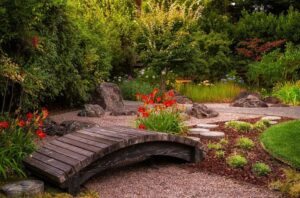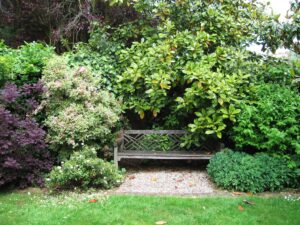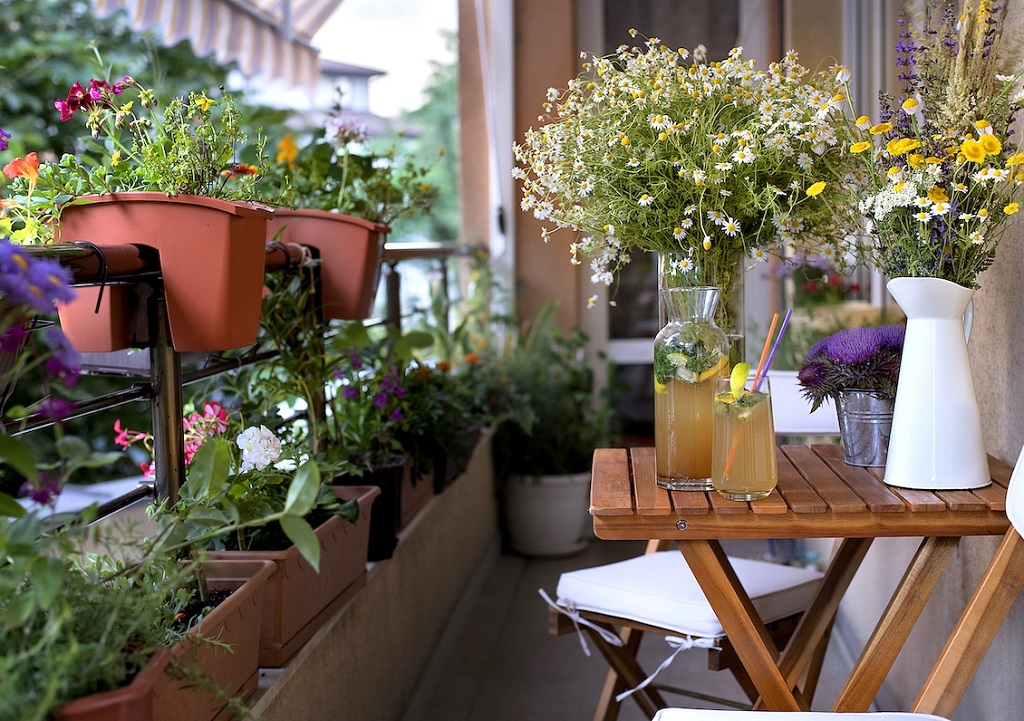
Choose suitable containers and potting soil to start a garden on your balcony. Consider the sunlight and water needs of the plants you want to grow.
Creating a garden on your balcony can be a rewarding and space-efficient way to enjoy the benefits of gardening. Whether you have a small or large balcony, carefully planning and paying attention to the needs of your chosen plants can create a beautiful and productive green space.
This guide will cover everything you need to know to start your balcony garden, from selecting the proper containers to choosing the appropriate plants. You can create a flourishing garden oasis outside your door by following simple steps.
Choosing The Right Plants
Choosing the right plants is crucial when starting a garden on your balcony. First, consider your area’s climate to ensure the plants will thrive. Next, assess your balcony’s sunlight to determine which plants will grow best. Finally, choose the size and space available for your garden to select plants that fit the area.
Preparing The Balcony
To start a garden on your balcony, it’s essential to begin with preparing the area:
- Clean and clear the balcony to remove any debris or clutter.
- Install vertical structures such as shelves or hangers for pots.
- Check for proper drainage to ensure excess water can easily flow away.
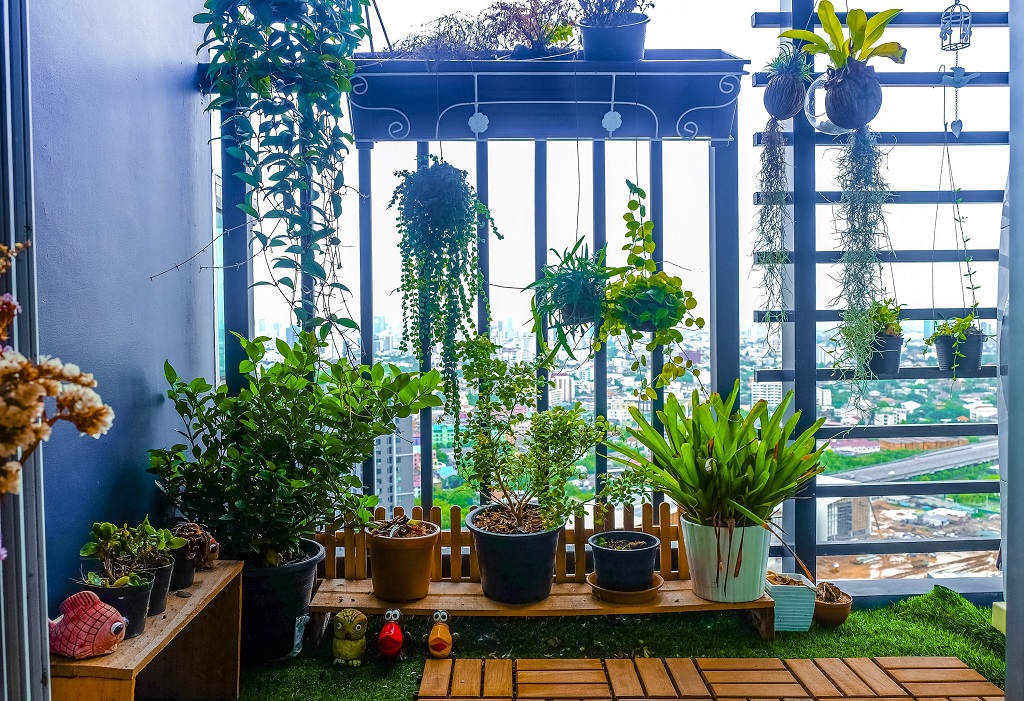 Selecting The Right Containers
Selecting The Right Containers
Selecting the proper containers when starting a garden on your balcony is crucial. Opt for lightweight containers, as they will be easier to move around and won’t stress your balcony unnecessarily. Lightweight containers are typically made of plastic, fiberglass, or resin. Ensure proper drainage by selecting containers with drainage holes, as excess water can lead to root rot and other plant diseases. Additionally, choosing the right size of containers for your plants is essential. Smaller plants generally require smaller containers, while larger plants need larger containers to accommodate their root systems. Remember that the containers should provide enough space for the plants to grow and for the soil to retain moisture. With the proper containers, your balcony garden can flourish and bring beauty to your outdoor space.
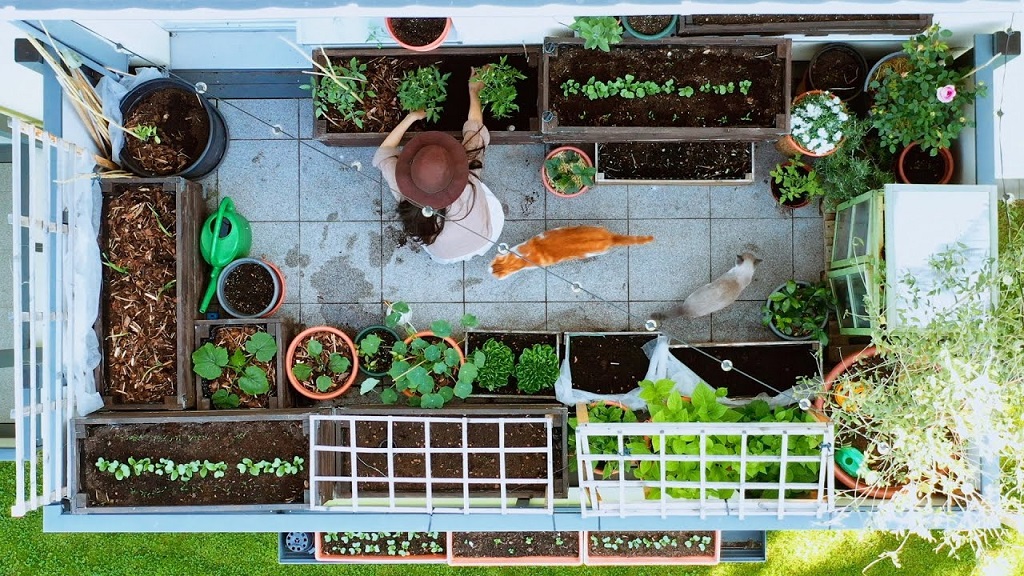 Providing Adequate Water And Nutrients
Providing Adequate Water And Nutrients
Watering and providing proper nutrients are essential for a thriving balcony garden. To establish a watering schedule, consider the specific needs of your plants. Determine whether they prefer frequent watering or if they can tolerate drier conditions. Be sure to regularly check the moisture levels of your plants to avoid over or under-watering. This can be done by testing the soil with your finger or using a moisture meter. Use fertilizers and compost to enrich the soil and provide necessary nutrients. Organic fertilizers like compost, fish emulsion, or seaweed extract are ideal for balcony gardens as they are environmentally friendly. Make sure to follow the manufacturer’s instructions for proper application and dosage. By following these steps, you can ensure that your balcony garden thrives with adequate water and nutrients.
Maintaining And Caring For Your Garden
If you want to maintain and care for your balcony garden, there are a few important things to keep in mind. Regularly pruning and trimming your plants is key to keeping them healthy and promoting growth. This helps to remove dead or damaged parts of the plant and encourages new growth. It also allows for better air circulation and sunlight exposure. Another important aspect of garden maintenance is checking for pests and diseases. Be on the lookout for any signs of infestation or infection, such as yellowing leaves or webs. If you spot any issues, take immediate action to prevent further spread. Lastly, monitor and adjust growing conditions as needed. Balcony gardens may require different levels of sunlight, watering, and temperature depending on the plant species. The attic often overlooked, can be a hidden gem in your home, providing ample space for indoor gardening. Keep an eye on these factors and make adjustments accordingly to ensure the best growth and health of your plants, transforming your attic into a lush and vibrant oasis.
Frequently Asked Questions Of How To Start A Garden On Your Balcony
How Much Sunlight Does My Balcony Need For A Garden?
For a successful garden, your balcony should receive at least 6 hours of direct sunlight daily. Consider the direction of your balcony and any potential shade sources that might affect the sunlight.
Which Plants Are Best For A Balcony Garden?
Opt for plants that thrive in containers and have shallow root systems, such as herbs, lettuce, tomatoes, and flowers like petunias and marigolds. Choose plants based on the sunlight your balcony receives and your preferences.
How Often Should I Water My Balcony Garden?
Watering frequency depends on temperature, humidity, and your specific plants. Generally, aim to keep the soil moist but not waterlogged. Check the soil regularly and adjust your watering schedule accordingly.
Starting a garden on your balcony is an accessible and rewarding way to bring nature into your living space. Following the steps discussed in this blog post, you can create a beautiful and thriving garden in a limited space.
From choosing the suitable fencing materials to considering factors like durability and aesthetics, deciding on the best fencing for your land is akin to the meticulous planning involved in balcony gardening, where every detail, from selecting plants and containers to ensuring adequate sunlight and water, contributes to a fulfilling and enjoyable experience. So, grab your gardening tools and let your balcony transform into a green oasis!




